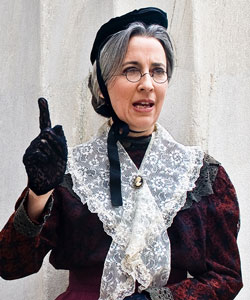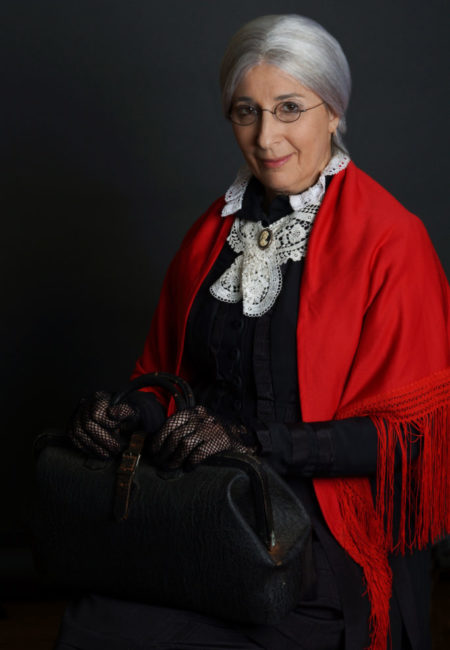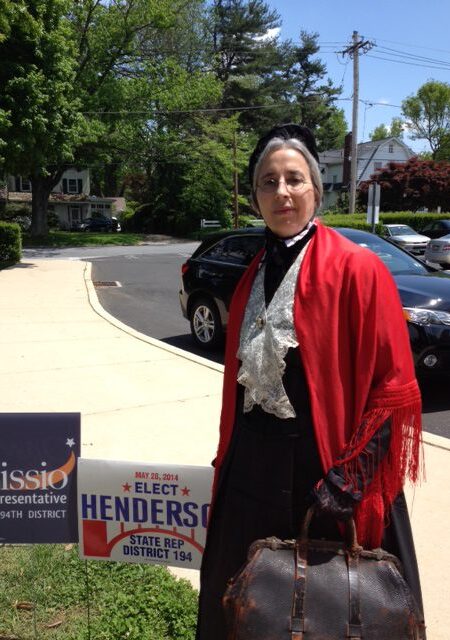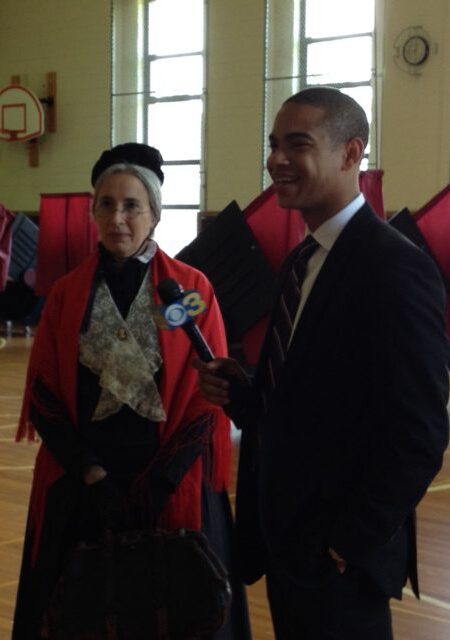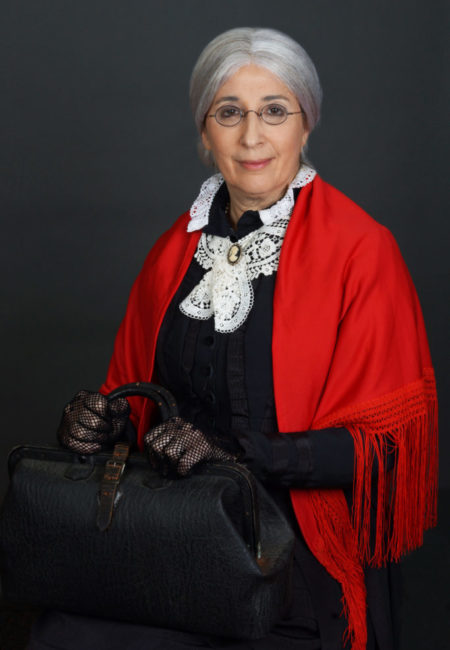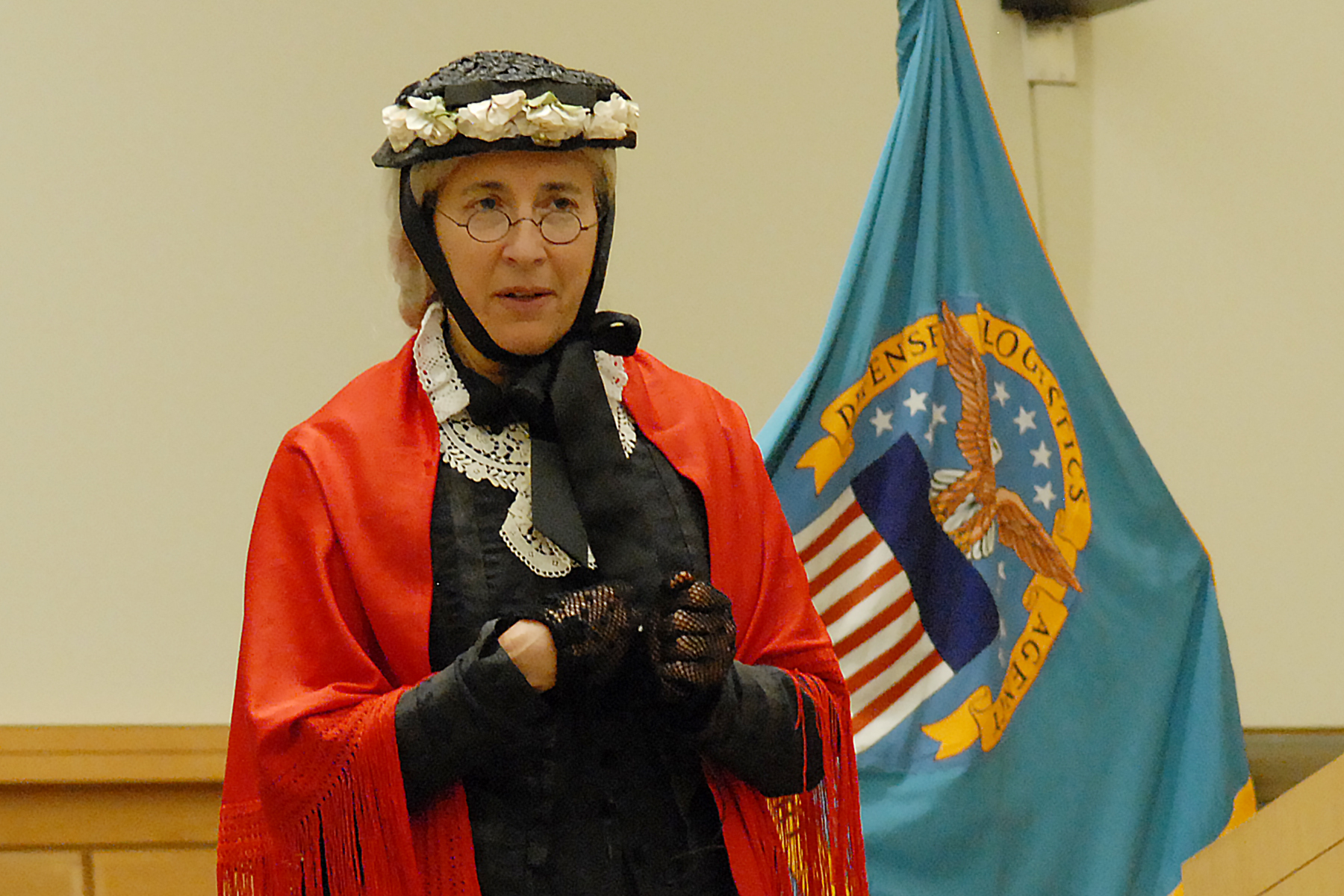Susan B. Anthony never dreamed that her likeness would one day appear on an American coin. During her day, any publicly disseminated images of her tended to be very unflattering. If those cartoonish, “manly” drawings that appeared in the newspapers bothered her, she never let it show. She’d just pick up her pamphlets and her alligator bag and head off to the next town or territory, where she would speak in favor of voting rights for women.
The second of seven children, Susan B. Anthony was born in 1820 in western Massachusetts to Daniel Anthony, a Quaker farmer, and his wife, Lucy Read Anthony. Quaker values were taught and practiced in the household, so young Susan had the unusual luck to grow up in a family where boys and girls were considered to be of equal worth and entitled to equal respect and equal educational opportunities.
When Susan’s father relocated the family to Battneville, N.Y. where he became the operator of a textile mill, she had her first encounter with institutionalized discrimination. At the local school, the boys and girls were separated and taught different kinds of lessons. Susan was scolded by the teacher for trying to participate in the boys’ mathematics class. When she related this event to her father, he withdrew her and her school-age siblings from that school and built a school of his own, where boys and girls, including the children of the mill workers, could learn as equals
There were very few higher education opportunities for girls, so when she was 17, Susan was sent to join her older sister at a Quaker boarding school for girls in Philadelphia. She had to leave after one year, though, as a nation-wide depression caused her father to declare bankruptcy and lose the house in Battenville. Upon her return, Susan began teaching school in order to help raise money for the family.
In 1845, the Anthony family went west on the Erie Canal to get a fresh start in Rochester, NY. Daniel Anthony took up farming and Susan continued her school teaching. The Anthony household was a hive of activity. In those pre-Civil War years, their house served as a meeting place for anti-slavery activists, including Frederick Douglass, the freed slave and well-known orator, who was a Rochester resident at the time.
As she grew into adulthood, Miss Anthony (as she was known to all but her family and closest friends) developed an active devotion to the cause of equality and justice for all. Her earliest forays into activism came via the temperance movement. She was well aware of the extreme domestic disruptions that occurred when husbands spent all their pay on liquor, then went home and beat their wives when they complained that there was no money to feed the children. Since these wives had no legal recourse, and almost no economic safety net, members of the temperance movement hoped to prevent abusive husbands and fathers from having ready access to alcohol.
And why did these abused wives not leave their husbands? Because married women of that era had virtually no legal status. At the time of marriage, a woman’s identity was united with and subsumed by her husband; legally, the wife did not exist. Any property that once belonged to the wife belonged to the husband. The husband was the sole guardian of any children of the marriage and in case of separation automatically retained custody, even in clear cases of abuse. In effect, in the eyes of the law, women were equal to children and the mentally incompetent. It is little wonder that Miss Anthony declined the offers of marriage that came her way.
As Miss Anthony took up metaphorical arms against the evils of alcohol (she was active in the Daughters of Temperance organization) and slavery (she was hired to be the New York State agent for the American Anti-Slavery Society), she kept running up against restrictions on women’s rights and behavior, which both infuriated and emboldened her. When the Daughters of Temperance were invited to attend a meeting of the Sons of Temperance, she was reprimanded when she rose to participate in the discussion. “The sisters have been invited to listen and learn,” she was told, “not to speak.” Miss Anthony subsequently severed all ties with the Sons.
At about the same time, another woman, destined to become a lifelong friend of Miss Anthony, had not been permitted to take her seat as a delegate to an international anti-slavery convention in London. As she watched the proceedings from the spectators’ gallery, it occurred to her and other similarly rebuffed female delegates that perhaps more attention ought to be paid to woman’s rights.
The woman was Elizabeth Cady Stanton, and in 1848 she helped organize the first woman’s rights convention in Seneca Fall, NY, which produced a “Declaration of Rights and Sentiments.” The Declaration demanded that women be given the same civil and political rights as men, including the right to vote. Although Miss Anthony was not present at that convention, she and her family read about it with interest, and in 1851 she was introduced to Mrs. Stanton by their mutual friend, Amelia Bloomer (of bloomers fame). They felt an immediate affinity for each other and began a friendship and partnership that would last for 50 years.
The two worked together on petitioning state legislatures for married women’s property rights, realizing very quickly that the best way to give women a say in their civic lives was to give them the power of the ballot box. They temporarily suspended their efforts for woman suffrage during the Civil War, devoting their energies instead to the campaign to eradicate slavery. After the War, they were deeply disappointed to find that many of their companions in the abolitionist movement did not share their views on universal suffrage. Anthony and Stanton were also outraged that the Constitutional amendment that guaranteed the freed slaves the right to vote was worded so as to restrict that right to males. Not ones to give up or shrug with indifference when faced with injustice, the two women rolled up their sleeves and founded the National Woman Suffrage Association and devoted the rest of their lives to winning equal rights of citizenship for all.
As Anthony and Cady Stanton assumed leadership roles in the struggle for woman suffrage, they learned to rely on each other’s strengths and each looked to the other for wisdom, guidance and inspiration. Mrs. Stanton had seven children, so it was mostly Miss Anthony who had the freedom to travel, and travel she did- in all weather and conditions, throughout the United Stated and its territories, advocating for woman suffrage and thus becoming the public face of the movement: the face that eventually appeared on a coin. Her greatest moment of notoriety came when she went to her local polling place during the 1872 presidential election and cast a ballot, claiming that she had the Constitutional right to do so. She was subsequently arrested, tried, found guilty, and fined. The trial was followed closely by the press, and the transcripts of the trial proved to be popular reading material.
In the late 1890’s, after many years on the road, Miss Anthony relinquished her leadership role in the movement and returned to her beloved Rochester home. She continued to write and advocate from there, and attended as many conventions as she could. In 1906, she traveled to Baltimore to attend the convention of what was then called the National American Woman Suffrage Association, where she addressed an adoring crowd. After a side trip to Washington, DC, where she called on President Theodore Roosevelt to seek his support (which she didn’t get), she attended an 86th birthday party that had been organized for her. There she remarked that, although she didn’t expect to live to see her goals realized, she gazed with confidence upon the next generation of women who were much better equipped to carry on the task than she was. With women such as these, she observed, “Failure is impossible.”
Miss Anthony grew ill when she returned from her journey. She took to her bed and died on March 13, 1906. The 19th Amendment to the U.S. Constitution, also known as the “Susan B. Anthony” amendment, giving the right to vote to all U.S. women, was ratified in 1920.
